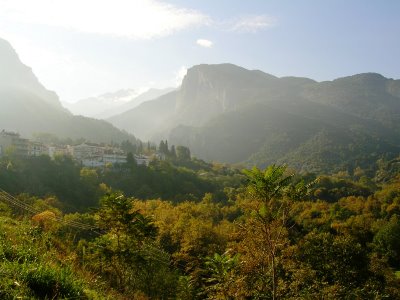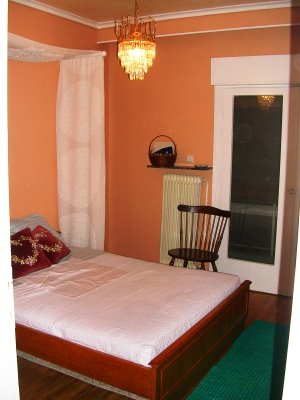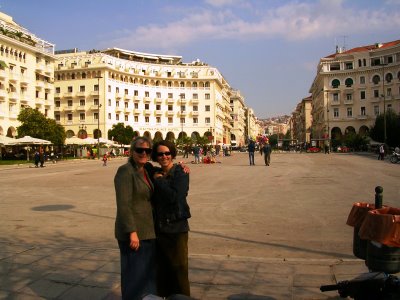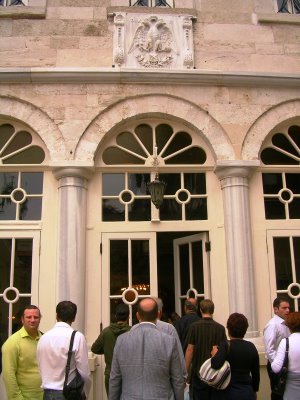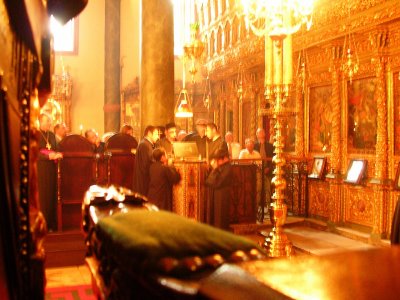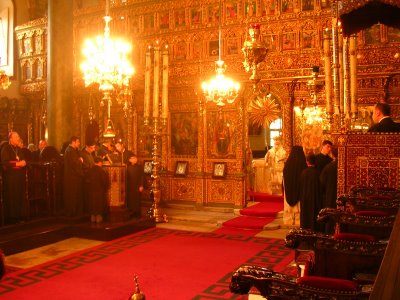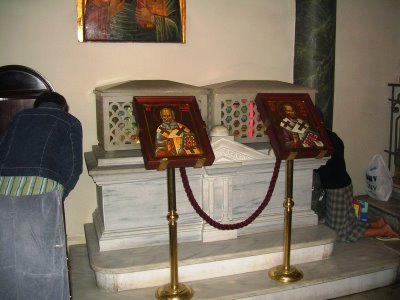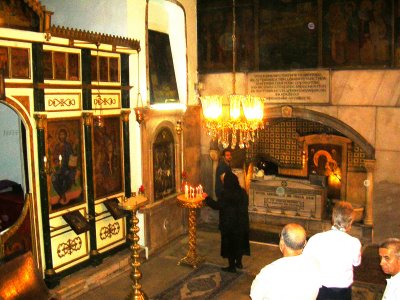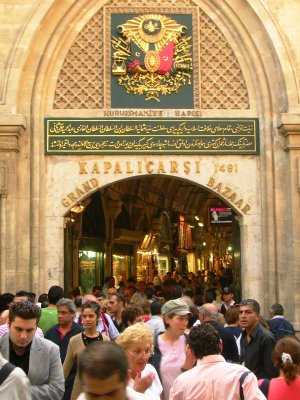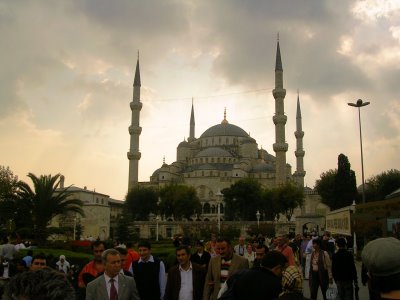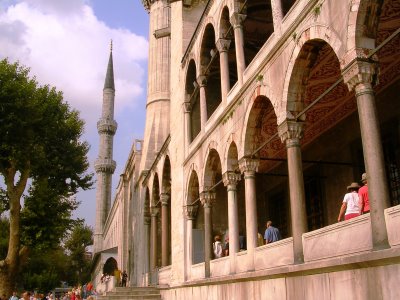
On Thursday, we were blessed to celebrate the feast day of St. Demetrios at his cathedral in downtown Thessaloniki (see the 'file' photo). This is the largest church in Greece, and every square inch of it was full of people! Oh, the humanity!
There were 13 bishops celebrating, as well as about 25 priests and 4 deacons. We waited in what I will loosely call a 'line' to venerate St Demetrios' (fragrant) relics, which were placed in front of the royal doors. What an experience!
We arrived around 7 AM and the church was already full, by American standards (i.e. every seat was taken). By the end, there were at least 100 times more people. I couldn't even bring my arm up to make the sign of the cross!
St Demetrios is the patron of Thessaloniki, and the whole city shuts down for his feast day, which also commemorates the liberation of Thessaloniki from the Ottomans on Oct 26, 1912. We were truly blessed to be here for that day.
Some time in the next 2 weeks, we hear, there will be a service in which the saint's relics are taken out and wiped down with cotton. They then hand out the myrrh-soaked cotton to the faithful. I've heard that you can smell the myrrh for blocks around when they do this. We hope to go, if we can find out when the service is (obtaining reliable information on schedules here is a whole 'nother story).
On Thursday evening, we met our house guest, Constantine Zalalas, at the monastery here in Panorama. He had escorted there two American nuns from St. Paisios Serbian Orthodox Monastery in Arizona, including Abbess Mihaela. He's helping them do some purchasing of church supplies and staying with us until some time next week. He has translated a slew of Greek texts into English -- a listing is available here. (I now have 175 hours of talks to listen to!) ( ; 
